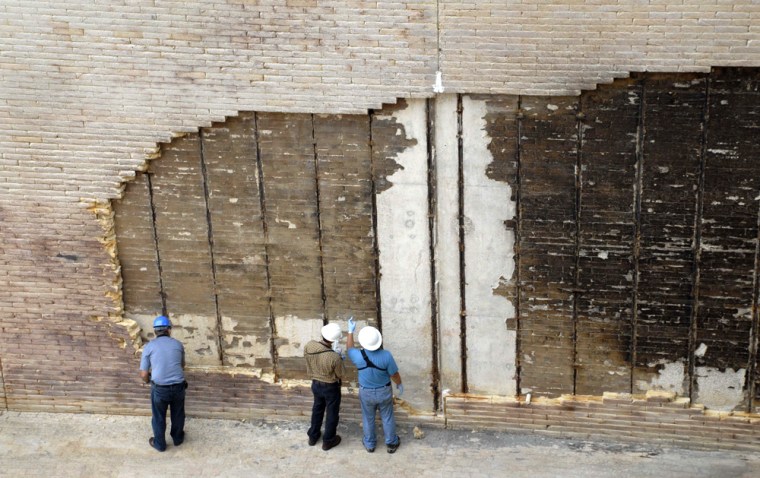More than two weeks after Discovery's blastoff battered the launch pad, NASA is close to nailing down its repair strategy and insists the damage can be mended in time for the next space shuttle flight.
NASA plans to send Atlantis to the launch pad at the end of August, for an early October liftoff to the Hubble Space Telescope.
NASA allowed journalists to see the damage for themselves Monday, two days after Discovery's safe return to Earth. About 5,300 of the special heat-resistant bricks broke off a wall of the flame trench during Discovery's liftoff on May 31. Some of the foot-long bricks were hurled more than 1,800 feet.
Most of the bricks were still scattered over the ground Monday, many of them in fragments, resembling the aftermath of a volcanic eruption. Traces of asbestos in the bricks and the adhesive have stalled cleanup efforts.
The most likely repair is installing steel mesh over the 75-by-20-foot area where the bricks came off and then spraying on a heat-resistant covering. That method does not require new bricks, which would take a few months to make and receive, said Perry Becker, a NASA engineer who is leading the investigation and repair effort.
Senior managers will meet June 26 to consider the options.
NASA still does not know exactly what caused the flame trench to come apart and why it broke now, after decades of use. It's clear, however, that when the launch pad was built by the U.S. Army Corps of Engineers in the 1960s for the Apollo moon shots, some of the bricks were not placed right up against the adhesive on the concrete wall.
The space agency is inspecting its other launch pad, called Pad B, to see whether it, too, has flaws.
Previously, NASA said, the worst damage to a launch pad was the loss of 800 bricks from the flame trench at Pad B during Challenger's doomed liftoff in 1986.
The trenches are designed to deflect the flames at booster rocket ignition.
